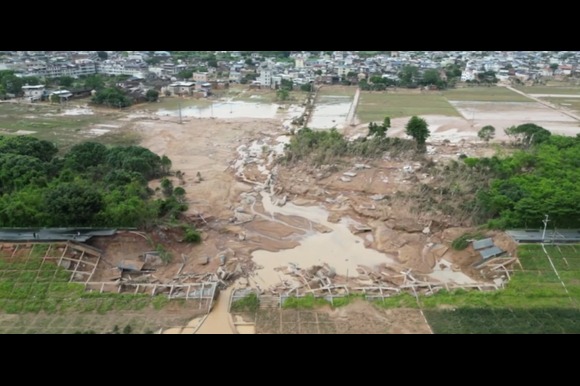China: At least 30 people have been confirmed dead in Beijing, and more than 80,000 residents have been evacuated to safety, as relentless rains and severe flooding wreak havoc across northern China, authorities said.
Additionally, eight people were killed in a landslide on Monday in Chengde, a city located approximately three hours northeast of the capital.
China is currently enduring a summer marked by extreme weather conditions. Earlier this month, the eastern region of the country experienced record-breaking heatwaves, while the southwestern provinces were battered by severe floods.
In response to the ongoing catastrophe in the north, President Xi Jinping has ordered “all-out” rescue operations and instructed officials to brace for “worst-case and extreme scenarios.” On Monday, Xi emphasized that no effort should be spared in locating and rescuing those who are missing or trapped. He urged the authorities to relocate and resettle affected populations swiftly and to minimize casualties as much as possible.
To support relief and recovery operations, Chinese authorities have allocated 200 million yuan (approximately $28 million; £21 million). The funds will be used primarily to repair critical infrastructure, including transportation systems damaged by the floods.
The torrential downpours have hit the outskirts of Beijing the hardest, especially the suburban districts of Miyun and Huairou. Dozens of roads have been destroyed, and power has been cut to more than 130 villages. Dramatic footage circulating online shows rescue teams navigating chest-high floodwaters to reach isolated residents. In addition, helicopters and drones have been deployed to deliver food, water, and emergency supplies to the hardest-hit areas.
Ms Yang, a woman working in Hebei province, shared her distress with BBC Chinese. Her family, who reside in Miyun — one of the worst-affected districts — have been unreachable since Sunday. Her elderly parents and grandfather, all of whom have health conditions and limited mobility, were taking care of her eight cats and three dogs at the time of the flooding.
Yang described their village as remote, consisting of only around 10 households. Concerned that it might be overlooked by rescuers, she turned to social media to plead for help, hoping her loved ones and pets would be found and brought to safety.
Survivors from flood-affected areas have spoken of the rapid and terrifying pace at which the waters rose.
“The flood came rushing in, just like that — so fast and suddenly,” said Zhuang Zhelin, a shop owner from Taishitun town near Beijing, in an interview with the Associated Press. “In no time at all, the place was filling up.”
Another resident from the same town recounted his experience: “I just ran upstairs and waited for rescue,” he said. “I remember thinking, if no one came to get us, we’d be in real trouble.”
Flooding is not uncommon in Beijing during this season. One of the deadliest incidents occurred in July 2012 when 190mm of rain fell in a single day, resulting in 79 deaths.
This year’s summer floods have caused widespread destruction across large parts of the country.
Earlier this month, two people were killed and ten went missing in Shandong province when Typhoon Wipha swept through eastern China. Just two weeks prior, a landslide in Ya’an city in the southwest claimed three lives.
Experts have increasingly linked these extreme weather events to climate change, noting the growing threat they pose to both China’s population and its economy. The country’s massive agricultural industry, valued in the trillions, remains particularly vulnerable.
According to the Ministry of Emergency Management, natural disasters have cost China approximately 54.11 billion yuan ($7.5 billion; £5.7 billion) in just the first six months of this year. Flooding alone has accounted for over 90% of those economic losses, the ministry reported.






